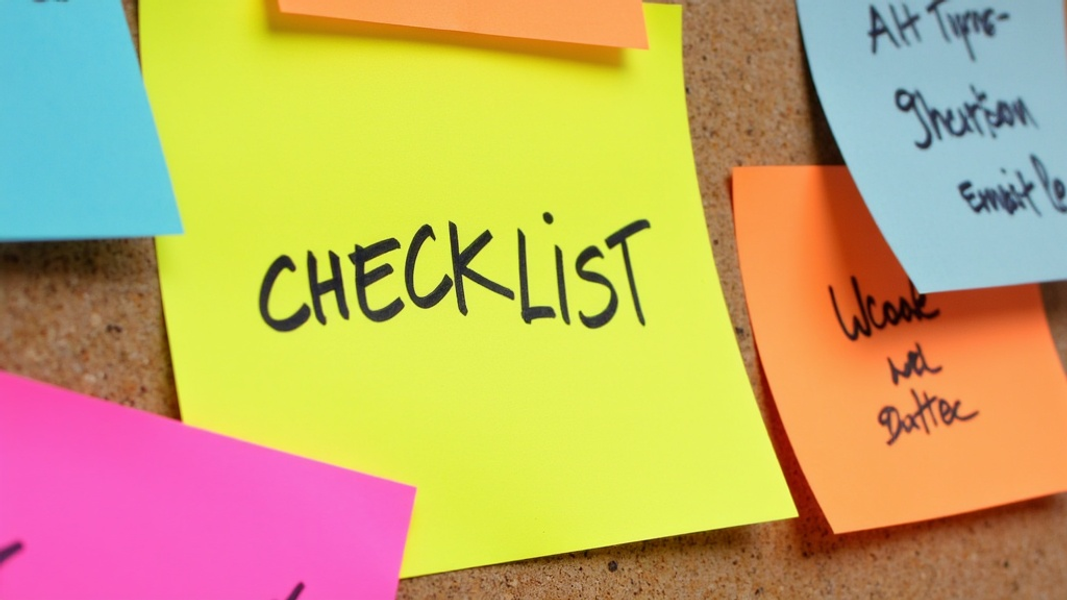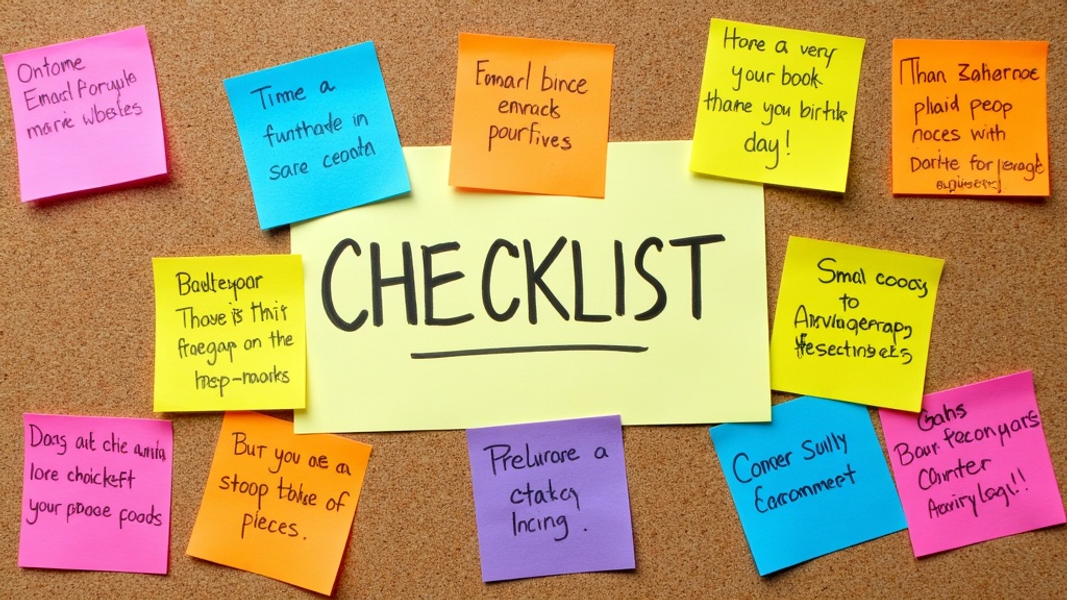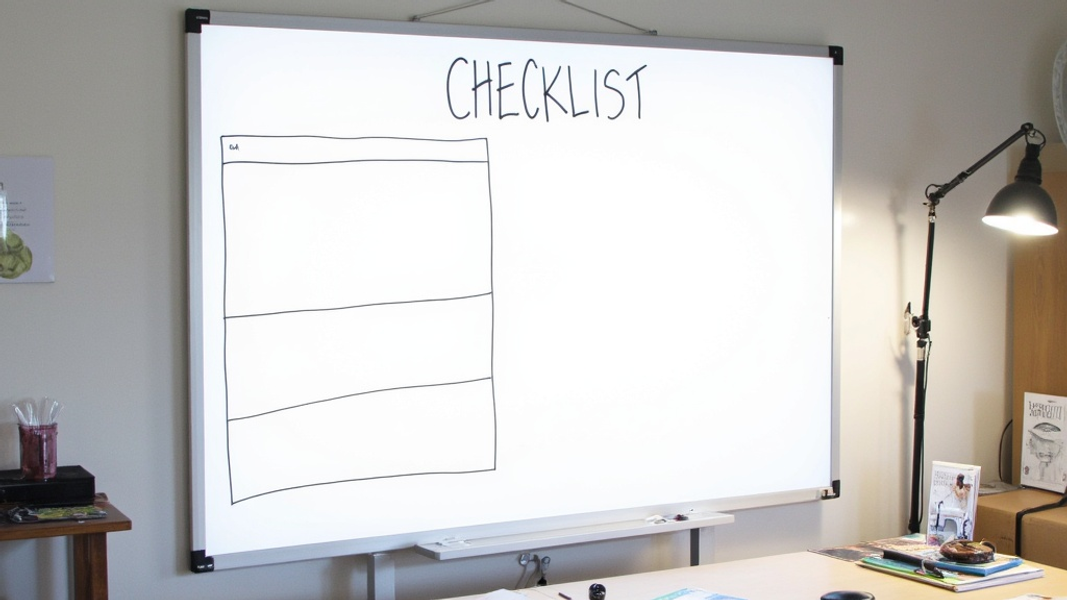
Did you know that 21% of email recipients report email as spam even if they know it isn't? This startling fact highlights the importance of getting your email marketing right. Our comprehensive email marketing checklist will help you avoid common pitfalls and boost the impact of your campaigns.
Understanding Email Marketing Checklists
What is an email marketing checklist?
An email marketing checklist is a tool that helps marketers ensure they've covered all the important aspects of their email campaigns before hitting send. It's like a to-do list for your emails, making sure you don't forget any crucial steps.
These checklists typically include items related to content, design, technical setup, and legal compliance. They serve as a final check to catch any errors or oversights that could harm your campaign's success.
Why use an email marketing checklist?
Using a checklist for your email marketing offers several benefits. First, it significantly cuts down on errors. When you're juggling multiple tasks, it's easy to overlook something important. A checklist acts as your safety net, catching those small but potentially damaging mistakes.
Checklists also help improve your campaign performance. By systematically reviewing all aspects of your email, you're more likely to spot areas for improvement. This could mean tweaking your subject line for better open rates or adjusting your call-to-action for more clicks.
Lastly, checklists ensure consistency across your campaigns. When every team member follows the same checklist, you maintain a uniform quality standard. This consistency helps build trust with your audience and strengthens your brand image.
Pre-Send Checklist: Planning and Strategy
Define campaign goals
Before you start crafting your email, it's crucial to define what you want to achieve. Are you looking to drive sales, increase website traffic, or maybe boost engagement with your content? Whatever your goal, make it specific and measurable.
For example, instead of a vague goal like "increase sales," aim for something like "increase product X sales by 15% within two weeks of the email campaign." This specificity helps you measure success and adjust your strategy for future campaigns.
Segment your audience
Not all subscribers are the same, so why send them all the same email? Segmenting your audience allows you to tailor your message to different groups, making it more relevant and effective.
You might segment based on factors like purchase history, engagement level, or demographic information. For instance, you could create separate email versions for new customers and long-time loyal customers, each with content that speaks directly to their relationship with your brand.
Choose optimal send time
Timing can make a big difference in how many people open and engage with your email. The best time to send will depend on your specific audience, so it's worth testing different times to see what works best.
Consider your subscribers' time zones and daily routines. A B2B company might find success sending emails during work hours, while a lifestyle brand might see better results in the evening or on weekends.

Content Creation Checklist
Craft compelling subject lines
Your subject line is your first (and sometimes only) chance to grab your reader's attention. Keep it short and snappy - aim for 30 to 50 characters. Use strong, action-oriented words that create a sense of urgency or curiosity.
For example, instead of "Our monthly newsletter," try "5 can't-miss deals inside!" Remember to avoid spam trigger words like "free" or "buy now" that might land your email in the junk folder.
Optimize preview text
Preview text is the snippet of text that appears after the subject line in most email clients. It's a often-overlooked opportunity to entice readers to open your email.
Use this space to expand on your subject line or highlight a key benefit inside the email. Avoid repeating information from the subject line or sender name. For instance, if your subject line is "Summer Sale Starts Today," your preview text could be "Get up to 50% off on beach essentials!"
Write engaging body content
Once your reader opens the email, you need to keep them engaged. Focus on the benefits to the reader rather than just listing features. Use clear, simple language that's easy to understand at a glance.
Break up your content into short paragraphs or bullet points for easy scanning. And always include a clear call-to-action (CTA) that tells the reader what to do next, whether it's "Shop Now," "Learn More," or "Get Your Free Trial."
Design and Layout Checklist
Ensure mobile responsiveness
With more than half of all emails now opened on mobile devices, a mobile-friendly design is no longer optional. Use a responsive email template that automatically adjusts to different screen sizes.
Test your email on various devices and email clients to ensure it looks good everywhere. Pay special attention to font sizes, button sizes, and image scaling on smaller screens.
Optimize images
Images can make your email more engaging, but they can also slow it down. Compress your images to keep file sizes small and load times quick. Tools like TinyPNG can help with this.
Always include alt text for your images. This text appears when images don't load or for visually impaired readers using screen readers. Make your alt text descriptive and relevant to the content of the image.
Create an effective layout
A good email layout guides the reader's eye through your content in a logical way. Use a clear hierarchy with headings and subheadings to break up your content.
Incorporate white space to prevent your email from feeling cluttered. This makes it easier for readers to focus on your key messages and CTAs.

Technical Checklist
Test all links
Broken links are a quick way to lose credibility with your audience. Before sending, click on every single link in your email to make sure they all work and lead to the correct pages.
If you're using tracking parameters in your links (like UTM codes for Google Analytics), double-check that these are set up correctly. This ensures you can accurately measure the performance of your email campaign.
Check for rendering issues
Email clients can display the same email in very different ways. Use an email testing tool like Litmus or Email on Acid to preview your email across a range of popular email clients and devices.
Don't forget to review the plain text version of your email. Some subscribers prefer plain text, and it's also important for accessibility and spam filtering.
Verify personalization
If you're using personalization in your emails (like addressing subscribers by name), make sure it's working correctly. Test your merge tags with a variety of sample data, including edge cases like missing information.
Always have a fallback in place for when personalization data is missing. For example, if you don't have a subscriber's name, your email could default to "Hello, valued customer" instead of showing an error or blank space.
Deliverability Checklist
Authenticate your emails
Email authentication helps prove that your emails are really from you and not from a spammer impersonating your brand. Set up SPF (Sender Policy Framework), DKIM (DomainKeys Identified Mail), and DMARC (Domain-based Message Authentication, Reporting, and Conformance) records for your sending domain.
Consider implementing BIMI (Brand Indicators for Message Identification) as well. This allows you to display your logo next to your emails in supporting inboxes, increasing brand recognition and trust.
Maintain list hygiene
A clean email list is crucial for good deliverability. Regularly remove inactive subscribers who haven't opened your emails in a long time. This might seem counterintuitive, but it can actually improve your overall engagement rates and sender reputation.
Handle bounces and unsubscribes promptly. Most email service providers do this automatically, but it's worth double-checking your settings to make sure.
Avoid spam triggers
Spam filters have become increasingly sophisticated, but there are still some basic rules to follow. Avoid using all caps, excessive punctuation, or spam trigger words like "free" or "guarantee" in your subject lines.
Always include an easy-to-find unsubscribe option in your emails. This is not only a legal requirement in many places, but it also helps prevent subscribers from marking your emails as spam when they no longer want to receive them.
Post-Send Checklist
Monitor initial performance
Once your email is sent, keep a close eye on its performance in the first few hours. Watch for any unusual patterns in opens, clicks, or conversions that might indicate a problem.
If you notice any issues, such as a much lower open rate than usual, investigate quickly. There might be a technical problem you can fix, or you might need to send a follow-up email to correct any mistakes.
Analyze results
After your campaign has run its course, do a thorough analysis of its performance. Compare your results to your initial goals and to the performance of past campaigns.
Look beyond just opens and clicks. Consider metrics like conversion rate, revenue generated, or whatever key performance indicators (KPIs) are most relevant to your campaign goals.
Apply learnings to future campaigns
Use the insights from your analysis to improve your future emails. Did a particular subject line style perform well? Was one CTA more effective than others? Apply these learnings to your next campaign.
Remember, email marketing is an ongoing process of testing and refinement. Each campaign is an opportunity to learn and improve.
Conclusion
Using an email marketing checklist can significantly improve the effectiveness of your campaigns. By systematically reviewing all aspects of your email before sending, you can avoid common pitfalls and maximize your chances of success.
Remember, the key to email marketing success is continuous improvement. Use this checklist as a starting point, but don't be afraid to adapt it based on your own experiences and the specific needs of your audience.
FAQs
How often should I clean my email list?
It's a good idea to clean your email list at least once every six months. However, if you send emails frequently, you might want to do it more often, perhaps quarterly. Regular list cleaning helps maintain good deliverability and can improve your overall engagement rates.
What's the ideal length for a marketing email?
There's no one-size-fits-all answer, as the ideal length can vary depending on your audience and the purpose of your email. However, as a general rule, try to keep your emails concise and to the point. Aim for around 200-300 words for most marketing emails. If you need to include more information, consider breaking it up into a series of emails or linking to a longer piece of content on your website.
How can I improve my email open rates?
Improving open rates often comes down to three main factors: subject lines, timing, and sender reputation. Craft compelling subject lines that create curiosity or offer clear value. Experiment with different send times to find when your audience is most likely to engage. And maintain a good sender reputation by consistently sending valuable content to an engaged list.
